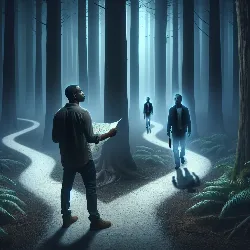
Level 1:
In most of the US, the time will change soon. On Sunday, at 2 am, the time will change to daylight saving time. After that, it will stay light for longer in the evening, but the sun will also rise later in the morning. This will continue until November 5 when the time will change back to standard time.
Level 2:
Most of the United States transitions to daylight saving time on Sunday at 2 a.m. This means that the sun will rise later in the morning than usual, but it will stay light for longer in the evenings. Daylight saving time ends on November 5th. On March 20th, winter sunsets and spring begins.
The tradition of changing clocks for daylight saving time has been around for over a century. Many people believe that daylight saving time saves energy and helps reduce crime rates, while others find it difficult to adjust to the change. Some studies suggest that changing the clocks can disrupt sleep patterns and lead to more accidents.
Regardless of personal opinions, it is important to remember to set your clocks forward an hour on Sunday and enjoy the extra sunlight in the evenings.
Full Story:
As winter begins to give way to spring, daylight saving time has returned to most of the United States. At 2 a.m. local time on Sunday, clocks sprung forward, marking the beginning of longer daylight hours in the evenings.
While the shift to daylight saving time means losing an hour of sleep, it also brings with it the promise of warmer weather and longer days. For many, the transition also signals the start of outdoor activities such as gardening, sports, and evening walks.
Although not all states observe daylight saving time, the majority of the country does participate in this seasonal change. The practice of changing the clocks dates back to the 20th century, when it was introduced as a way to conserve energy during World War I.
Today, many people still associate daylight saving time with energy savings, as longer daylight hours mean less reliance on artificial lighting. However, recent studies have shown that the actual energy savings may be minimal, and in some cases, nonexistent.
Despite this, the tradition of changing the clocks twice a year remains. And while it may take some time to adjust to the new time, there are ways to make the transition smoother. Experts recommend gradually adjusting your sleep schedule in the days leading up to the time change, as well as avoiding caffeine and alcohol in the hours before bedtime.
It’s also important to note that the shift to daylight saving time can have an impact on our health. Studies have linked the change to an increase in traffic accidents, workplace injuries, and even heart attacks. This is thought to be due in part to the disruption of our natural circadian rhythms.
To minimize the negative effects of the time change, experts advise getting plenty of rest and maintaining a healthy lifestyle. This includes exercising regularly, eating a balanced diet, and avoiding excessive screen time before bed.
Despite the potential drawbacks, many people still look forward to the return of daylight saving time each year. For some, it’s a reminder that spring is just around the corner, while for others, it’s a chance to enjoy longer evenings spent outdoors with friends and family.
In conclusion, the shift to daylight saving time marks the beginning of longer days and warmer weather for much of the United States. While the time change may take some getting used to, there are ways to make the transition smoother. By taking care of our health and well-being, we can enjoy all the benefits that come with the return of daylight saving time.
Questions:
What is daylight saving time, and when does it officially begin in most parts of the US?
What is the difference between standard time and daylight saving time?
How will the length of daylight change after daylight saving time begins?
Do you prefer daylight saving time or standard time? Why?
What are some tips for adjusting to the time change brought about by daylight saving time?
Fill In the Blanks:
sprung, evening, transition
local time on Sunday, clocks ________ forward, marking the beginning of longer daylight hours in the evenings.
For many, the ________ also signals the start of outdoor activities such as gardening, sports, and ________ walks.
Difficult Words:
transition - the process or a period of changing from one state or condition to another,
daylight saving time - the practice of setting the clock forward by one hour during the warmer months to extend the amount of daylight available in the evenings,
wee hours - the early hours of the morning, just after midnight,
rise - move from a lower position to a higher one,
standard time - the time generally used in a geographical area, typically the time zone of a country’s capital,
light - make something visible or bright by shining light on it,
evening - the period of time at the end of the day, usually from about 6 p.m. to bedtime,
spring - the season between winter and summer when the weather becomes warmer,
sunsets - the daily disappearance of the sun below the horizon as a result of Earth’s rotation.




